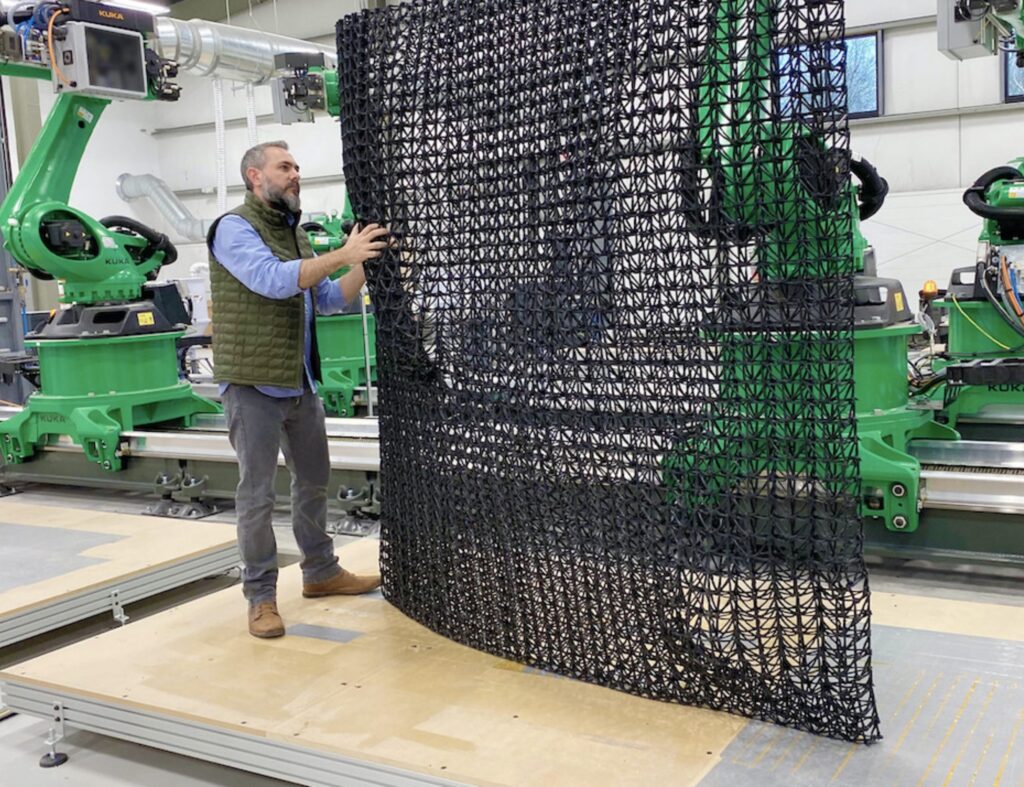Branch Technology celebrated an expansion of its investor base, marking a significant stride in the company’s growth journey. Recently, Global Brain, the investment arm of Japan’s Tokyu Construction, joined Branch’s Series B round of funding. This collaboration is not just about financial infusion but signals a broader purpose: to expand and grow the company beyond the boundaries of the United States.
Based in Chattanooga, Tennessee, Branch is a venture specializing in the manufacturing and sale of 3D printed structures. These include facades, monuments, and various other designs. Delving deeper into their innovative processes, at the heart of their operations, Branch’s proprietary Cellular Fabrication (C-Fab) process is the backbone of its innovations. Combining large-scale robotic 3D printing, custom geometric algorithms, high-performance composite materials, and intelligent building science, C-Fab offers technology-driven solutions for many industries. What makes their technology stand out is the ability to 3D print any design lattice structures, such as commercial buildings, fully compliant with US building codes.
While Branch has been at the forefront of these technological advancements, other industry giants also see the value. On their part, Tokyu Construction recognizes the potential of 3D printing, especially in achieving architectural designs that were previously deemed too complex. Beyond their aesthetic appeal, producing factory structures means a potential reduction in construction-related carbon emissions and an increase in automated construction, further cutting labor costs.
In alignment with this vision, Tokyu’s investment in Branch through Global Brain perfectly fits its long-term goals, prioritizing decarbonization and a movement towards zero waste. Through this partnership, Tokyu aims to harness 3D printing expertise to revolutionize productivity on construction sites.
Branch ascends
Speaking of success, Branch is on an upward trajectory, with sales skyrocketing from less than $2 million to over $12 million in just a year. Its innovative approach has also caught the eye of NASA. The company nailed the top spot in NASA’s 3D Printed Habitat Challenge, which envisions a future of autonomous machines building shelters in space. Branch’s unique 3D printing techniques not only allow the creation of curved surfaces that are challenging with current methods but also guarantee the durability of these facades. This approach ensures the structures are lightweight, offering an advantage over conventional materials like concrete and steel.
With Global Brain’s investment, Branch can dream bigger. Plans are in place to harness Global Brain’s resources, eyeing expansion on an international scale, tapping into the Japanese enterprise client base, and inventing new products.
Constructive leap
Making significant strides across various sectors, Branch’s commitment to sustainability was underlined when it secured a $1.13 million contract from the US Air Force (USAF) to pioneer a 3D printed retrofit system. This venture aims to augment insulation for exterior walls, addressing challenges such as installation maintenance, carbon footprint reduction, and bolstering building resilience. As David Goodloe, Program Development Manager for Branch, highlighted, buildings contribute 40% of global carbon emissions. Therefore, solutions like retrofitting are vital for the environment, and Branch aims to address this head-on.
Showcasing a commitment to social responsibility, Branch recently collaborated with the city of Chattanooga to design 3D printed shelters for people experiencing homelessness. These shelters promise rapid assembly, serving as a prompt solution for those in need. Furthermore, 2022 marked a significant collaboration with NASA, Stanford University, and the architectural firm Foster + Partners. Together, they introduced the Lunar Habitat Demonstration Structure, a prototype envisioning the construction of habitats in space through 3D printing.
Although other construction companies compete in this niche space, Branch claims it’s reshaping the landscape of construction and manufacturing with its 3D printing expertise. Firms like ICON, the Italian construction giant WASP, and others like Apis Cor and Contour Crafting also make waves in the industry with their innovative 3D printing construction technologies. However, each brings its unique approach and specialization, emphasizing the vast potential and diversity within the 3D printed construction realm.
